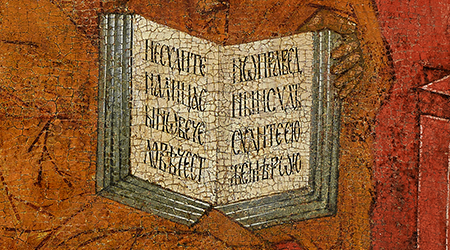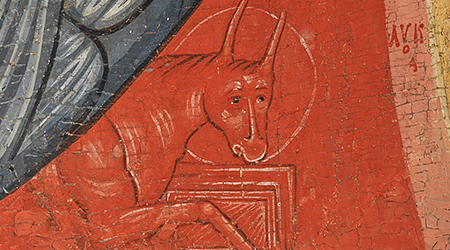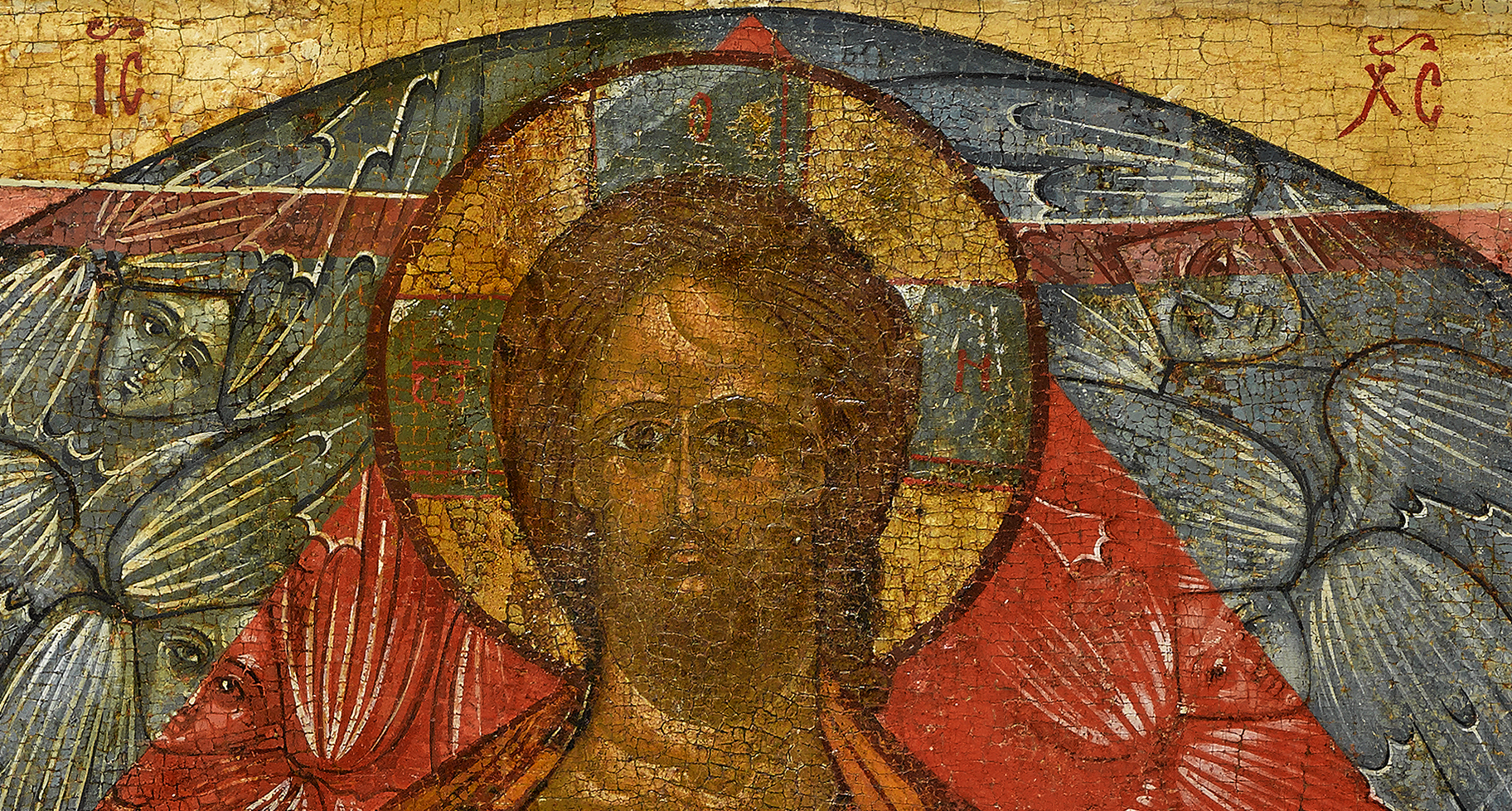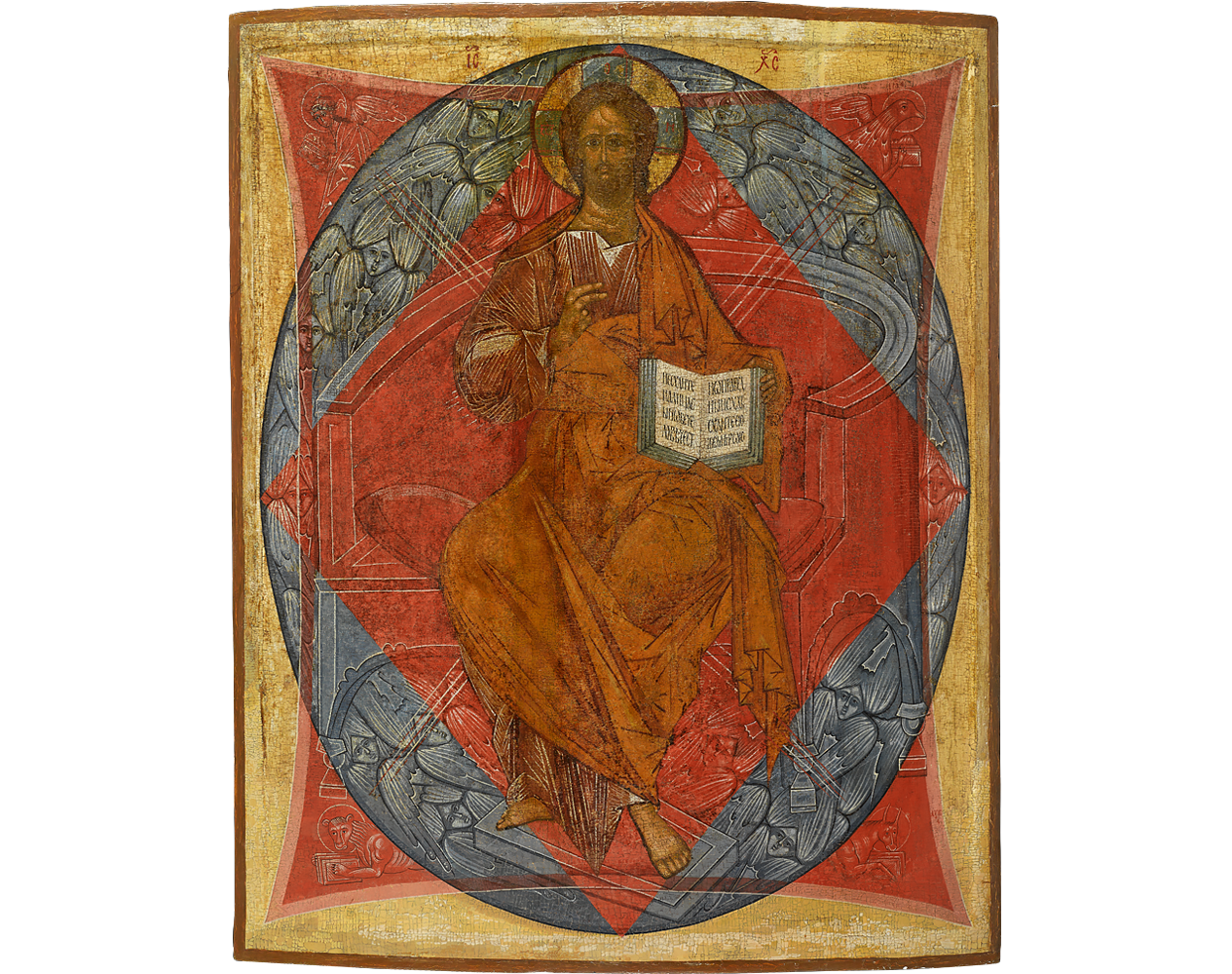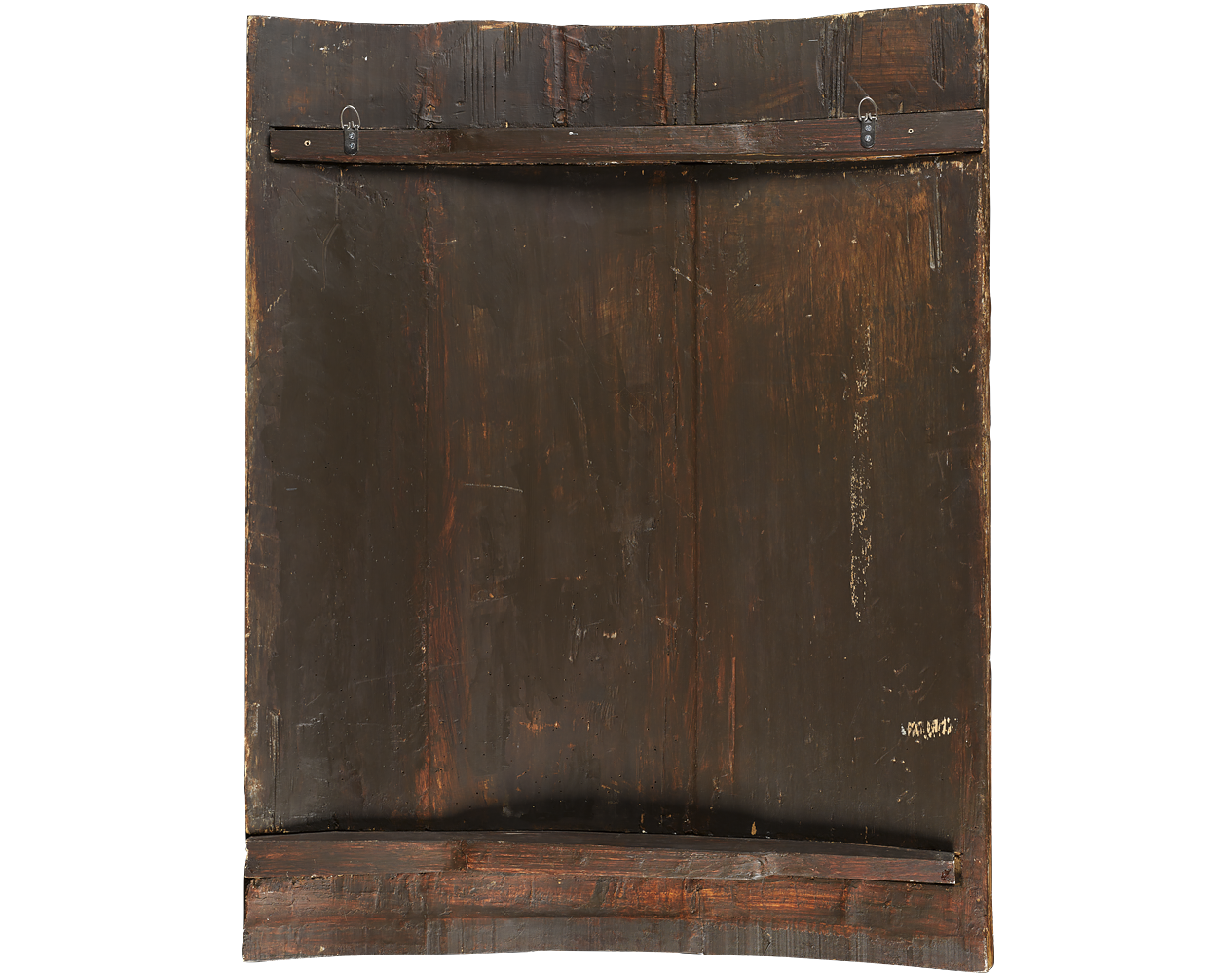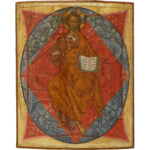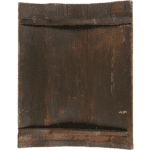This important early icon portrays Christ seated on a magnificent carved throne, his right hand raised in blessing. With his left hand he holds a book of Gospels open at a passage from the Gospel of Matthew, 7:1-2: ‘Judge not, that ye be not judged. For with what judgment ye judge, ye shall be judged; and with what measure ye mete, it shall be measured to you again.’ The Saviour is surrounded by an oval mandorla overlapping two concave rectangles, which together form an octagonal star. The outer red rectangle is adorned with symbols of the Evangelists: the eagle (representing John), the angel (Matthew), the calf (Luke) and the lion (Mark); its form denotes the four ends of the world, where Evangelists proclaimed Christ’s teachings through the Gospel. Within, the dark blue oval (decorated with winged seraphims and cherubs) signifies the celestial sphere, while the central red diamond symbolises the blazing fire that surrounds Christ’s divine throne.
The iconography reflects the vision of Prophet Ezekiel and the Revelation of St. John the Divine. ‘And I looked, and behold, a whirlwind came out of the north, a great cloud, and a fire infolding itself; and a brightness was about it, and out of the midst thereof as the colour of amber, out of the midst of the fire. Also out of the midst thereof came the likeness of four living creatures. And this was their appearance: they had the likeness of a man. And every one had four faces, and every one had four wings. And their feet were straight feet, and the soles of their feet were like the sole of a calf’s foot; and they sparkled like the colour of burnished brass. And they had the hands of a man under their wings on their four sides; and all four had their faces and their wings. Their wings were joined one to another. They turned not when they went; they went every one straight forward. As for the likeness of their faces, all four had the face of a man, and the face of a lion on the right side, and all four had the face of an ox on the left side; they four also had the face of an eagle’ (Ezekiel 1:4-10).
According to St.Jerome’s fourth-century interpretation, the tetramorphic figures were seen as symbols of four Evangelists who were destined to go to every part of the earth and carry the good news to the world. The red colour of the quadrangle is explained by these words: ‘their appearance was like burning coals of fire and like the appearance of lamps; it went up and down among the living creatures, and the fire was bright, and out of the fire went forth lightning’ (Ezekiel 1:13). The oval formed by cherubs’ wings represents the firmament. The firmament is the Glory of God, according to Ezekiel in chapter 10, where he states that the glory of the Lord was resting on the wings of the cherubs.
Depictions of Christ enthroned and surrounded by four apocalyptic creatures have been found in Byzantine art from the fifth century. In medieval Western European art, the subject became known as Maiestas Domini. In Russia in the late fourteenth and early fifteenth, the composition became a central focus of the iconostasis, often taking place of the main icon of the Deisis tier.
This icon is close in its iconography to those from the Cathedral of the Dormition in Vladimir painted around 1410 by Andrei Rublev and Daniil Cherny.
